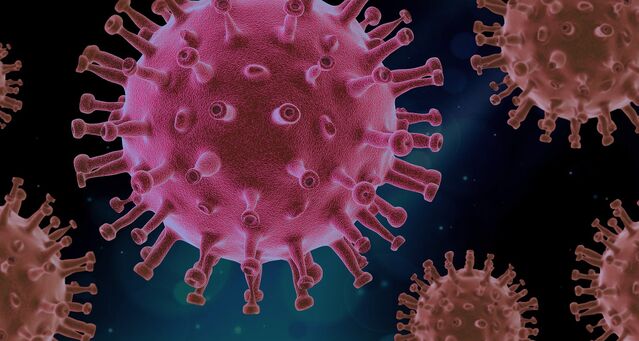Coronavirus Disease 2019
Three Important Questions About COVID-19
We may know a lot about COVID-19, but some critical questions remain.
Posted November 23, 2020

Is the virus that causes COVID-19 mutating?
Viruses are reproduced within host cells, and the process of making more virus particles within an infected cell involves producing copies of all the genes that make up the virus genome. Replication of the virus genome is essential to the virus life cycle, and is the target of some antiviral drugs, such as Remdesivir.
If I asked you to type out copies of a letter, you might occasionally make a mistake, and so it is with genome replication. It is these errors that can lead to the creation of genetic mutations. Reports suggest that SARS-CoV2, the virus that causes COVID-19, does not have an especially high mutation rate, but the virus will change over time.
Mutation is the currency of evolution. Alterations in the genome can lead to positive or negative changes, or genetic variation without functional impact. The outcome of any mutation can also depend upon context and perspective. What might be beneficial in one environment or set of circumstances could be deleterious in another. Furthermore, what is good for SARS-CoV2 may be bad for us, to a point. A virus that kills its host immediately upon infection would not be able to propagate throughout the population. This means that there is usually an equilibrium between the impact of a mutation in the virus genome on the host and the pathogen.
In the case of SARS-CoV2, it does seem clear that the virus has adopted at least one particular mutation that is increasing in prevalence. The so-called Gly614 variant that seems to have emerged in Europe now dominates the "second wave" of coronavirus spread throughout much of the world. This may represent a bona fide mutation with an advantage for the virus, as it causes a change to the so-called “spike” protein that the virus uses to stick to host cells, and the Gly614 variant does seem to be more infectious than the original.
It is tempting to hypothesize that although Gly614 might be more easily transmitted, it might be less likely to result in severe disease, in particular when death rates among infected individuals seem to be dropping. However, there are many other alternative explanations for why the coronavirus fatality rates appear to be dropping, in particular improved treatment options. So while it does currently seem that the virus has apparently changed, and this may make it easier to spread, it does not seem to be becoming inherently more or less deadly.
What types of masks are the best/worst?
Early on in the pandemic, there was a major focus on N95 masks, which filter 95% of airborne particles, and the consensus has been that due to potential supply issues, these should be reserved primarily for front line medical staff and other types of essential workers. Overall, the public health message that has emerged supports the standard use of other types of face coverings to restrict the spread of virus particles from infected individuals in coughs, sneezing, and even normal breathing, as well as reducing potential exposure for non-infected people.

Different designs and materials are available, and it is not immediately evident which might be sufficient for reducing viral transmission. Assessing the relative benefit of different types of masks and face coverings is not as easy as it might seem, and into this relative void appeared a highly publicized research study that contributed to significant skepticism regarding the utility of so-called neck gaiters in blocking the spread of the virus.
Neck gaiters are generally fabric tubes that can be easily popped over the head and pulled up and down over the nose and mouth as needed. When made of relatively thin breathable fabric, neck gaiters can be particularly useful to runners and other athletes. However, there are a number of questions about neck gaiters and some guidelines have begun to prohibit the use of these as face coverings and require other types of cloth or fabric masks.
Importantly, the study that caused much of this concern wasn’t designed to make conclusions regarding the relative benefit of different types of face coverings, rather it was simply reporting a method by which these assessments could be performed. In fact, the study in question specified that the data acquired, represent, “limited demonstration studies” and “should serve only as a demonstration” — thus, these results should only be seen as proof of principle, and not be used on their own as the basis for conclusions and guidelines. The guidance offered by the CDC is that single-layer neck gaiters should not be used on their own and beyond that, “Evaluation of mask and gaiter materials and structure is ongoing.” So while single layer neck gaiters should be avoided, or at least folded over to make two layers of fabric, the backlash against all types of neck gaiters may have been somewhat extreme.
When will it go away?
The global anticipation for a safe and effective vaccine has led to significant speculation regarding the timeline for the end of the pandemic. There are numerous excellent candidates currently undergoing well-designed trials, and distribution frameworks are already being developed. However, the vaccine likely will not be 100% effective at preventing infection, and it probably won’t be administered to 100% of the population.
The pandemic may effectively resolve soon after a vaccine can be widely distributed, and hopefully travel restriction and other public health measures will then be rolled back. However, the ultimate fate of the virus is not clear. It is relatively rare for a human pathogen to be completely eradicated. The prime example of this is smallpox, which ravaged the globe but was removed from the human population due to an international effort that represents one of the greatest public health victories in human history.
However, it is potentially likely that SARS-CoV2 won’t be completely and permanently eradicated from the global population. Rather, it may become endemic, potentially existing in animal "reservoirs" and popping up occasionally in certain areas, potentially in a seasonal fashion like the flu. Ultimately, this will depend on the extent of the protections provided by the vaccine, the strength and duration of the response, as well as the ability to test, trace and isolate outbreaks moving forward, as well as the availability of therapeutic treatment options.
Thus, the end of the pandemic won't necessarily mean the complete eradication of the virus, and as previously stated, we will need to continue following all of the critical public health guidelines that we have been following throughout the development, distribution, and deployment of the vaccine in order to help keep each other as safe as possible.





